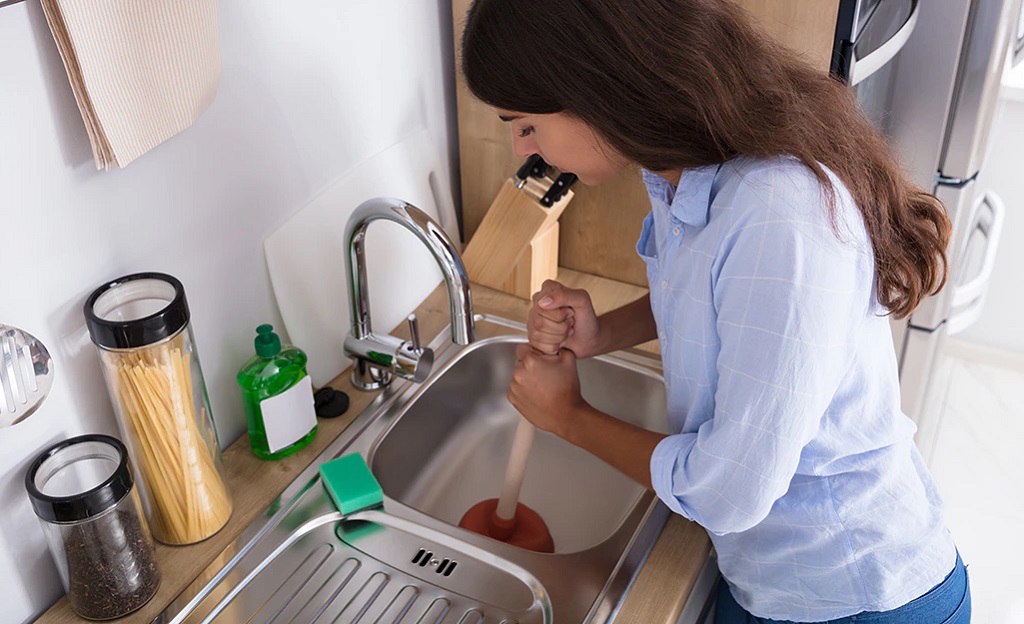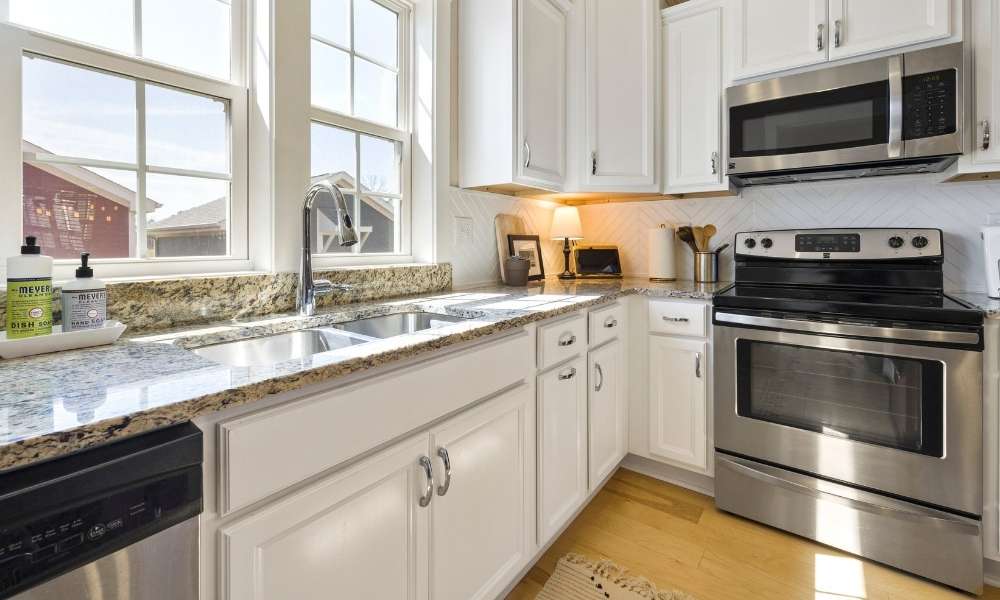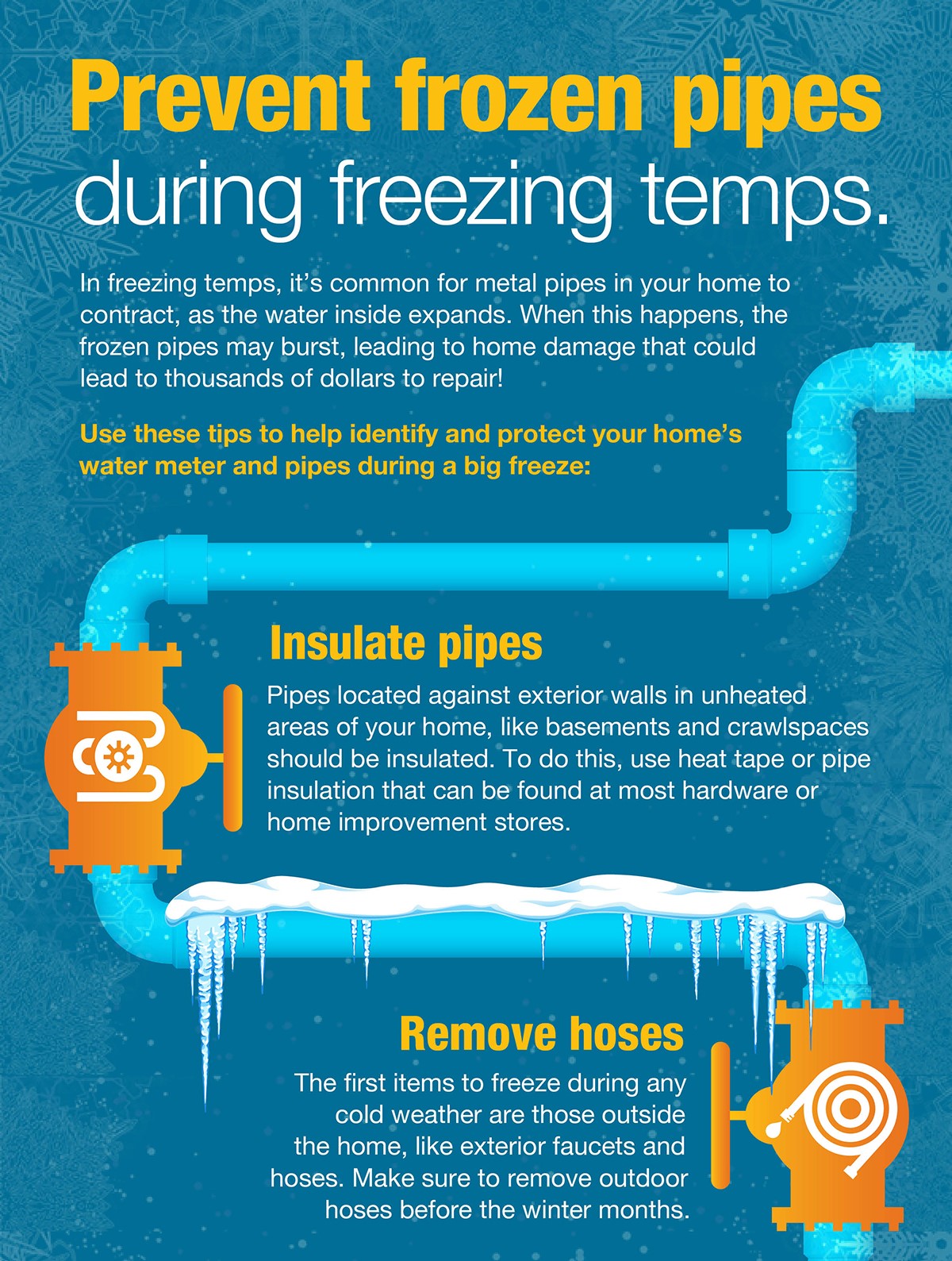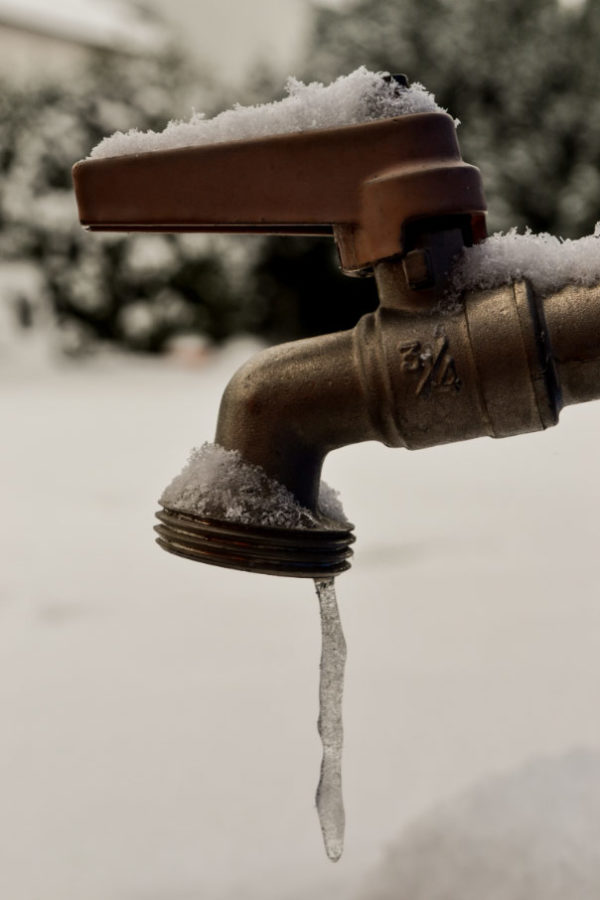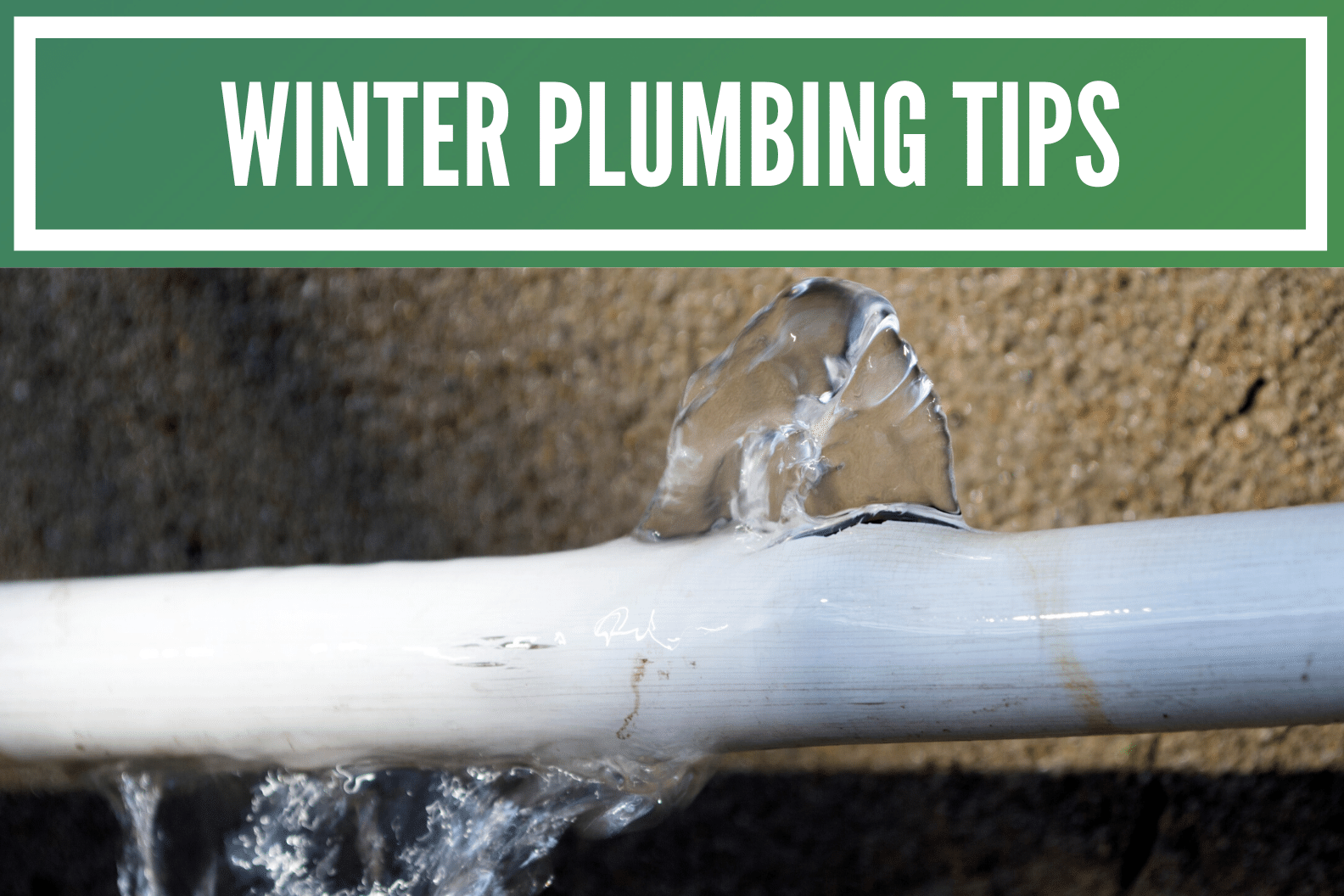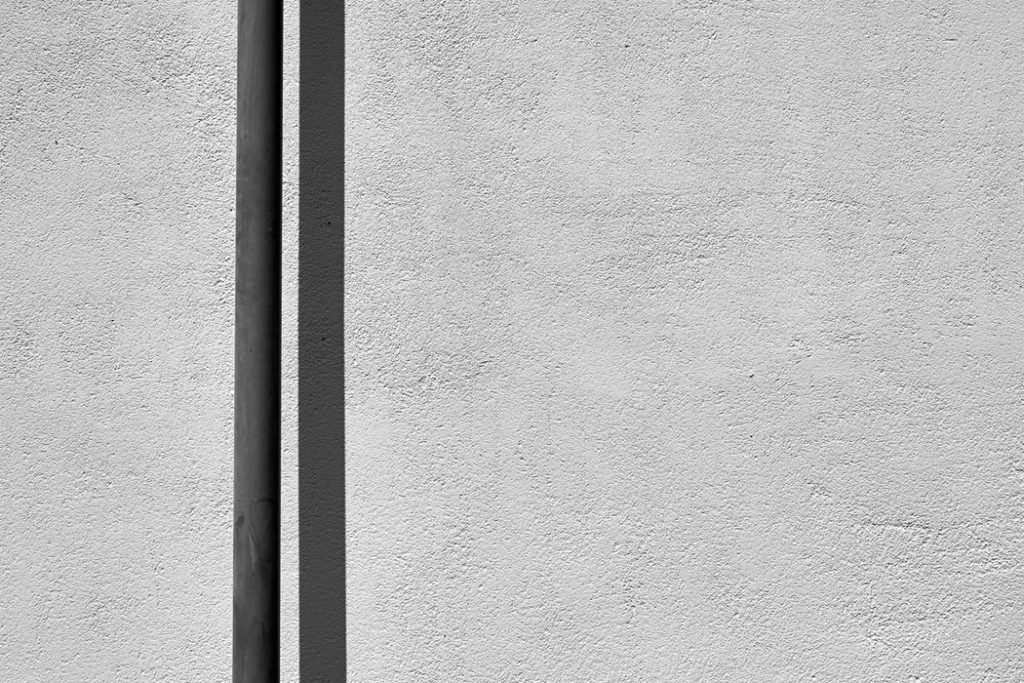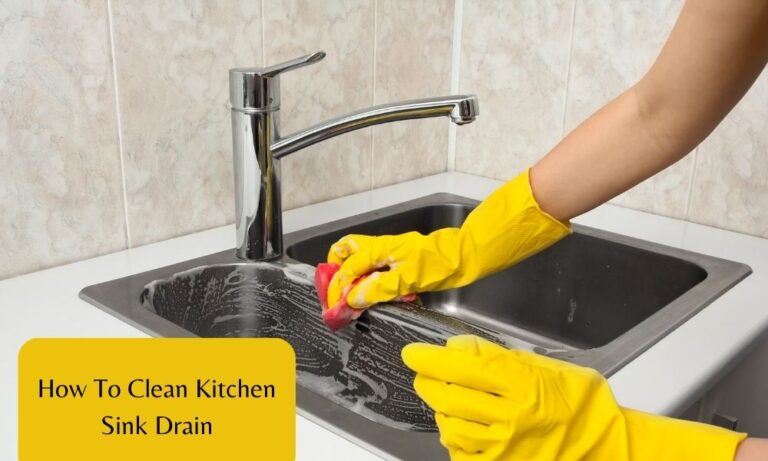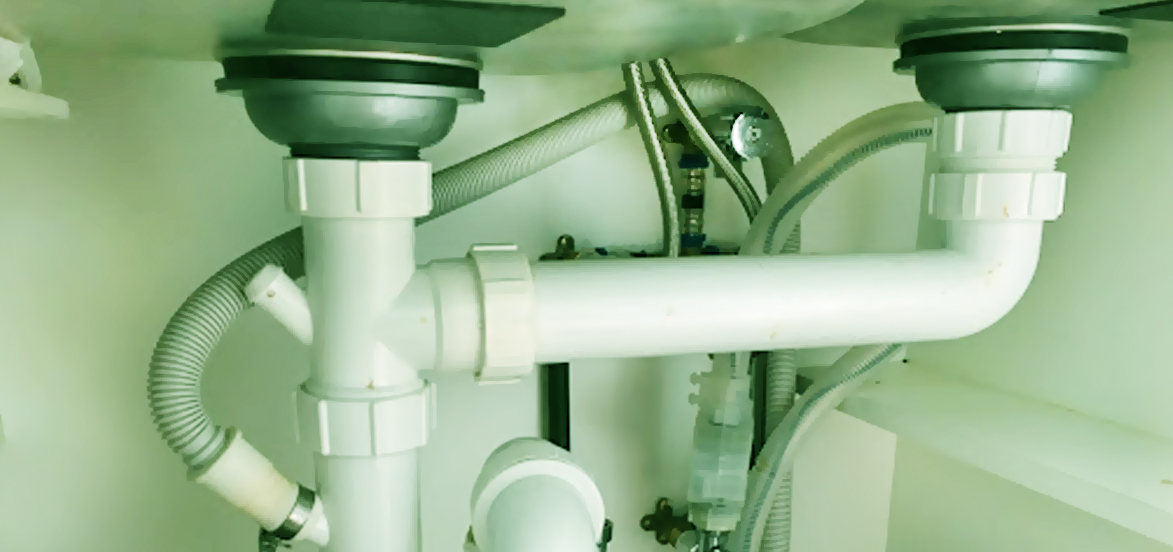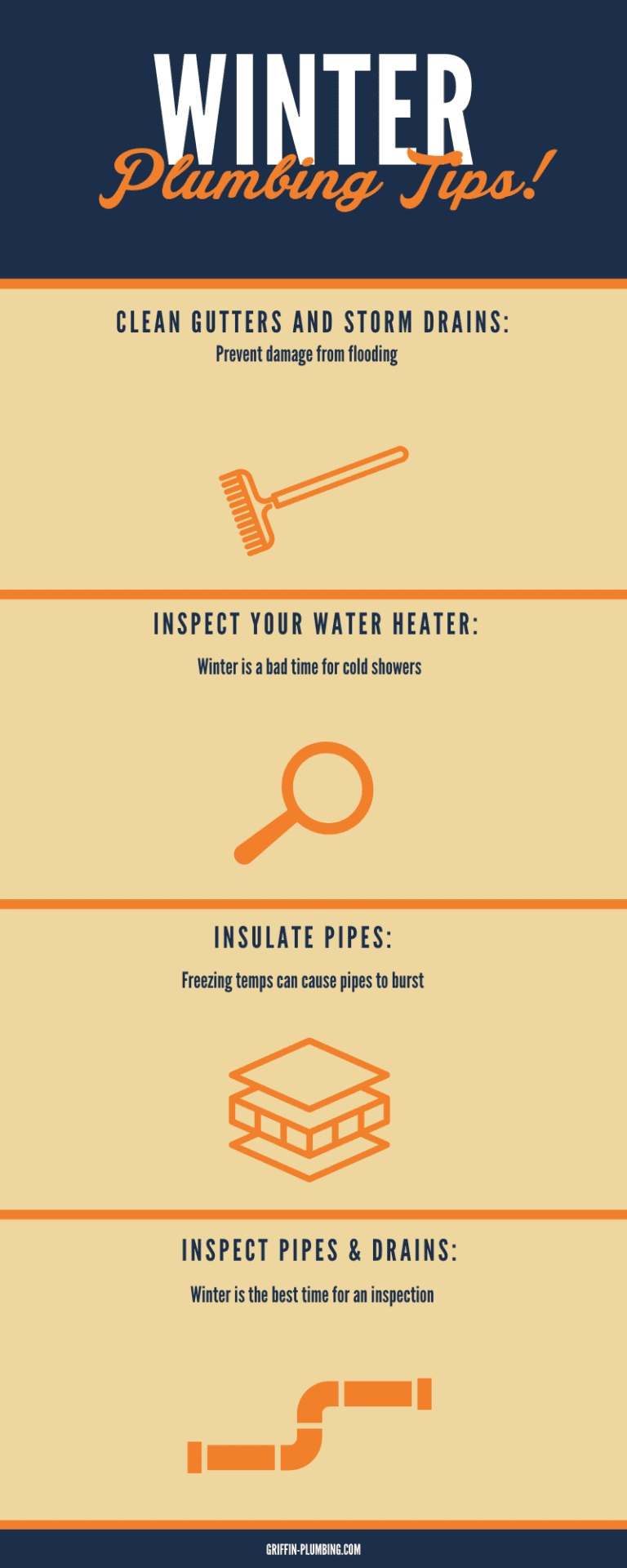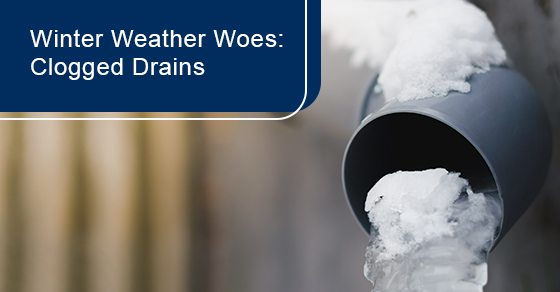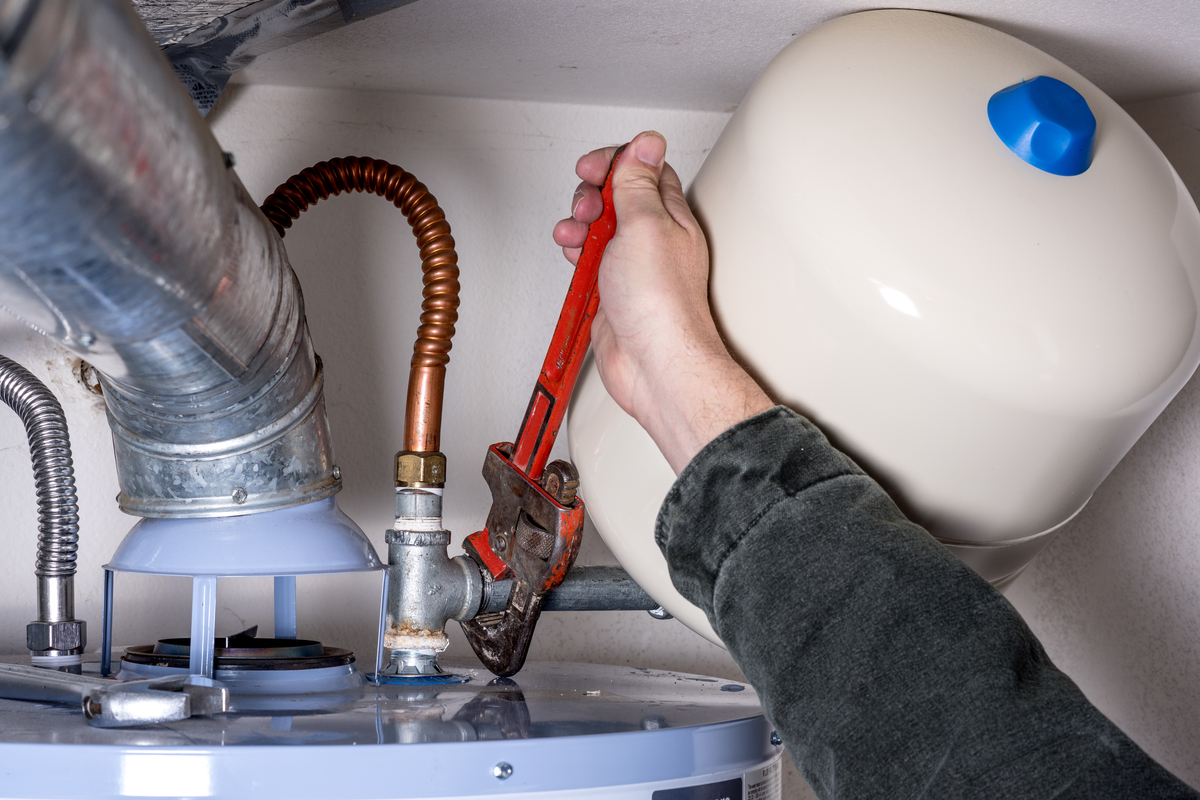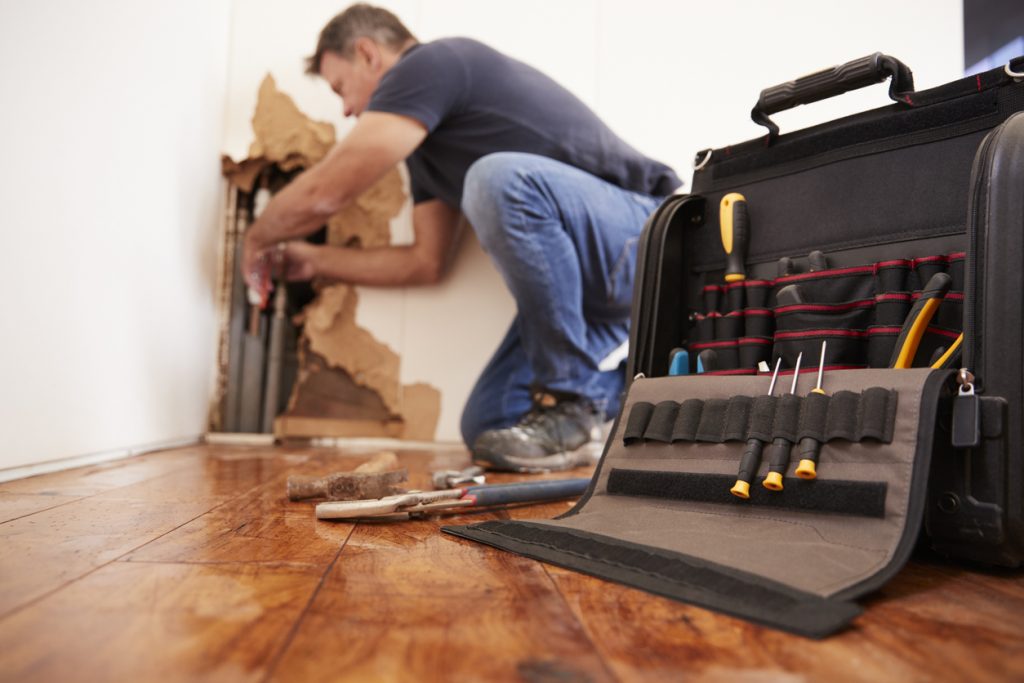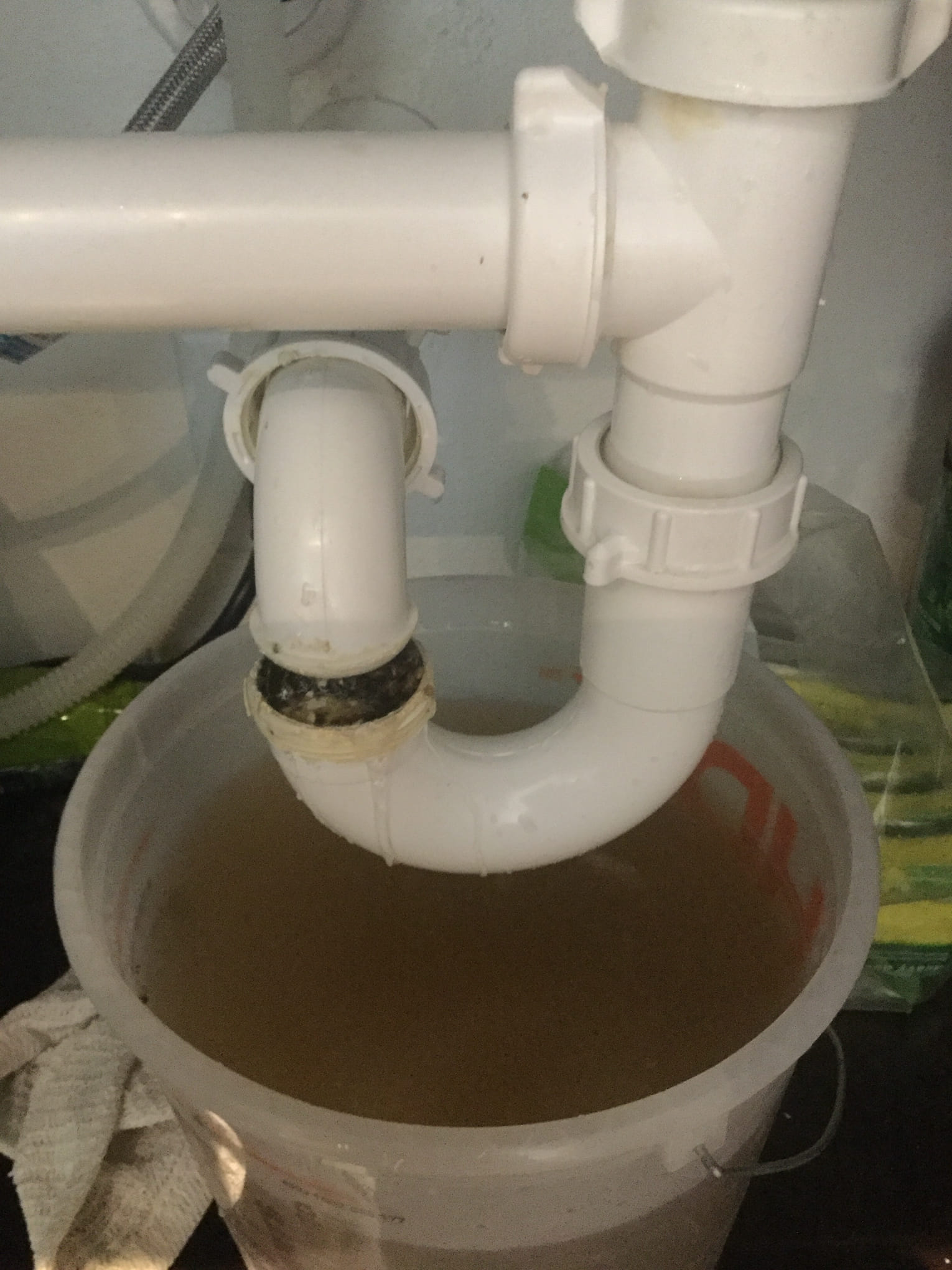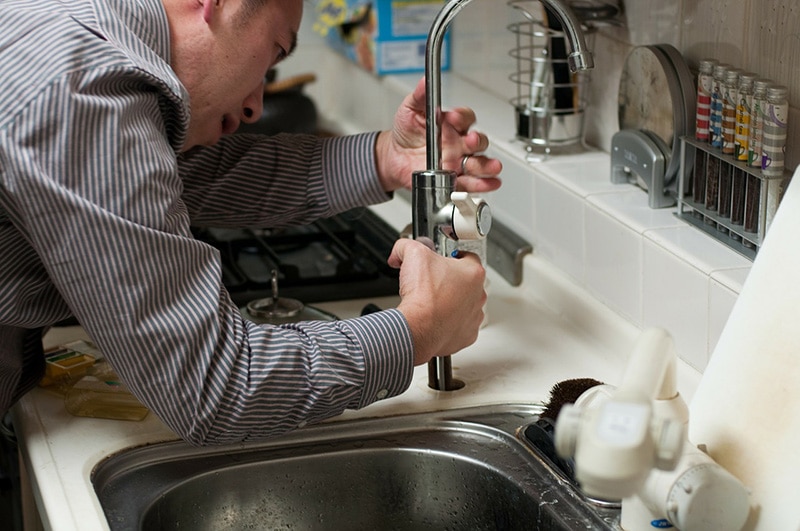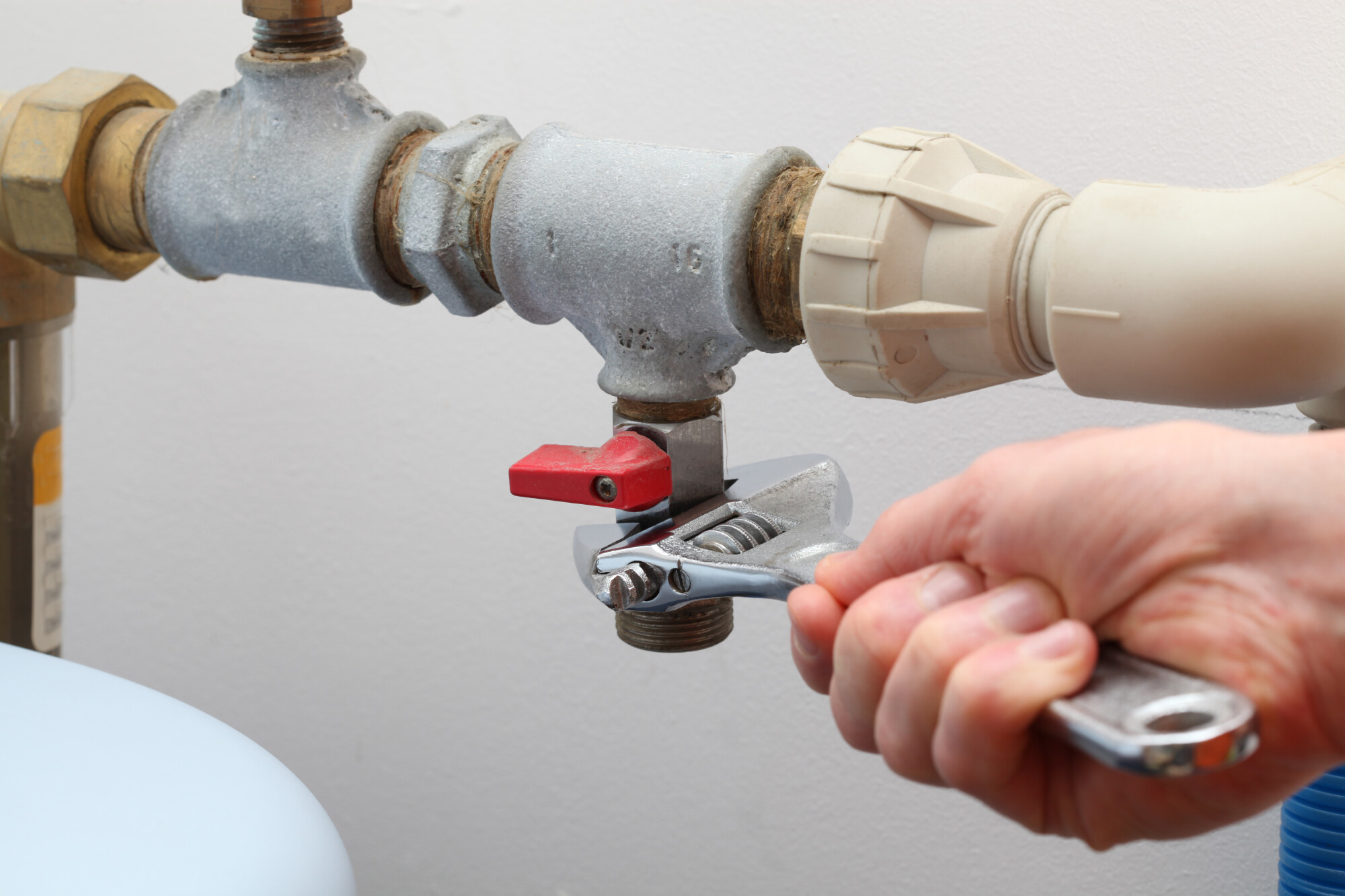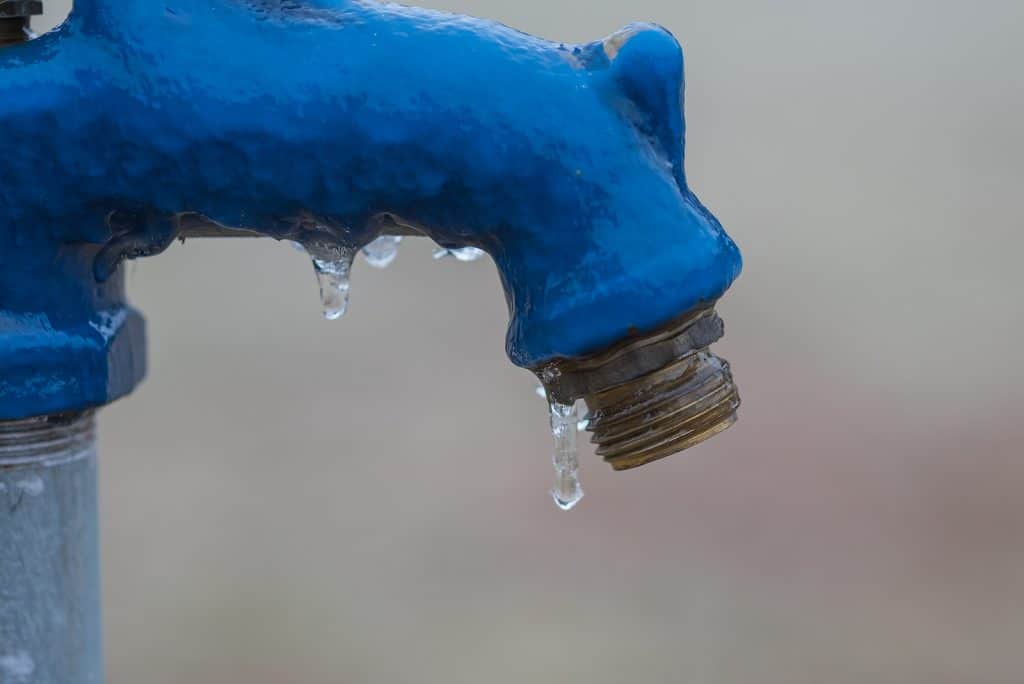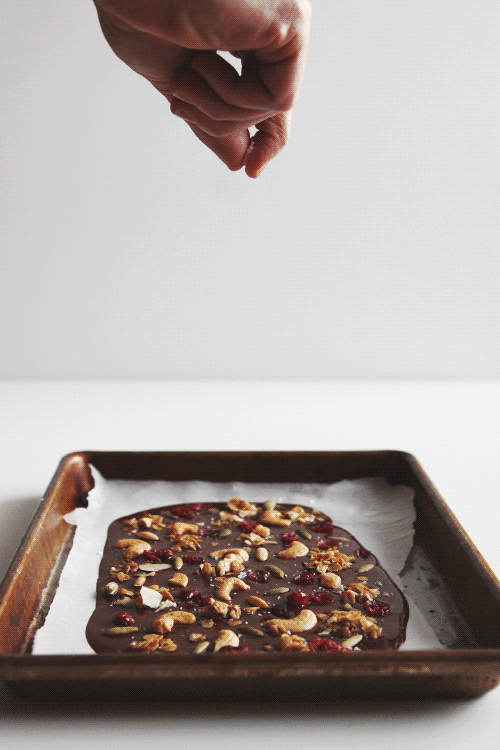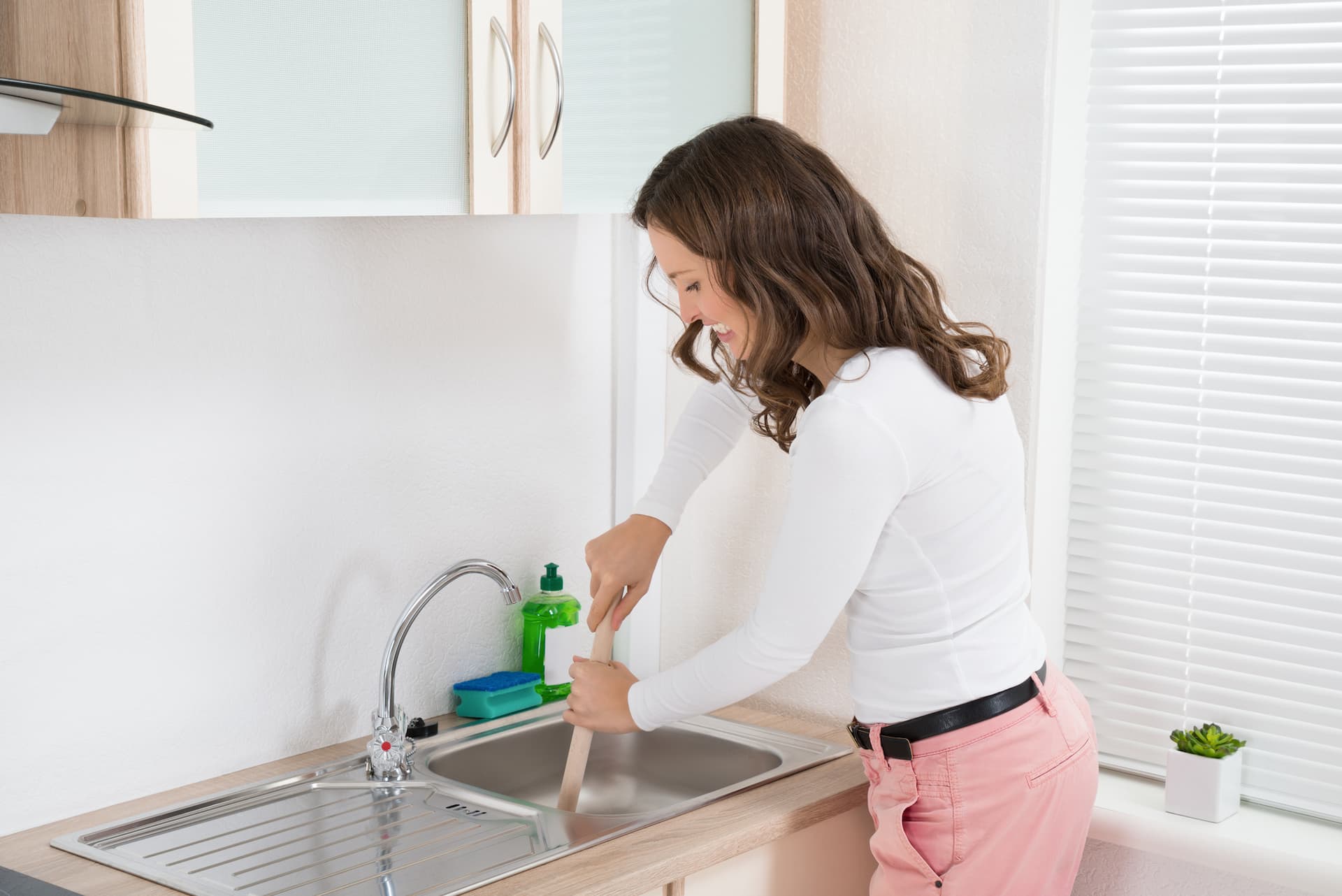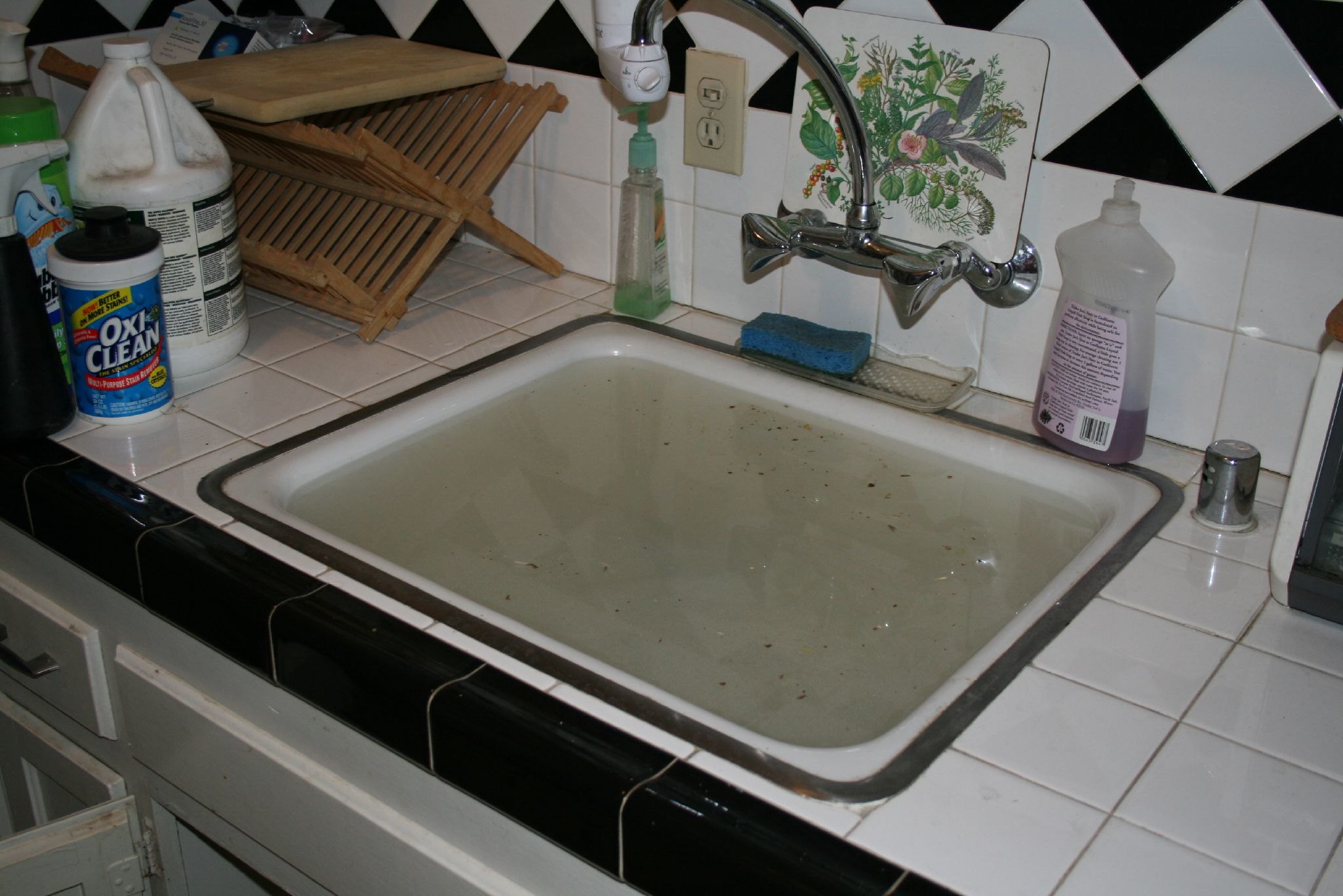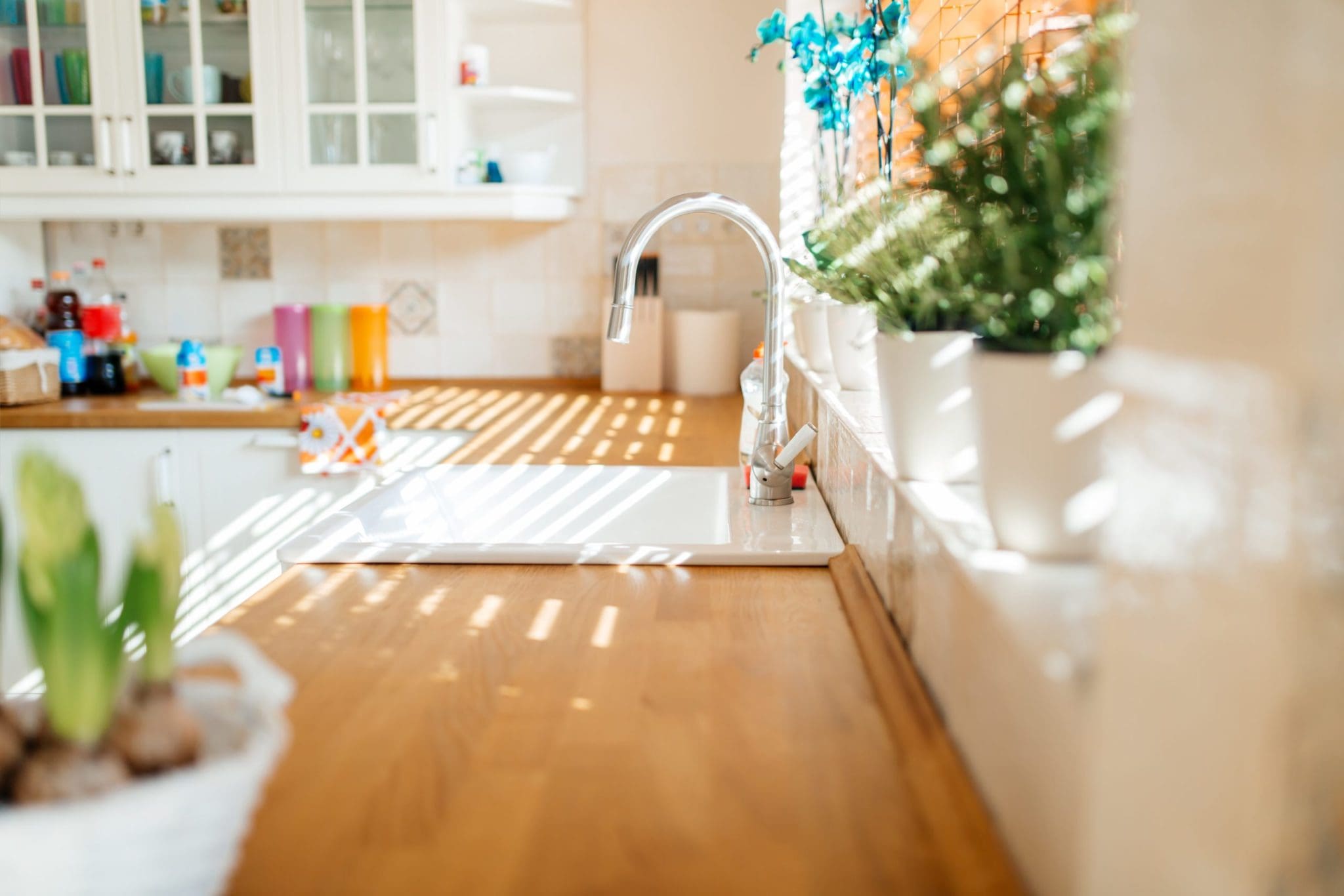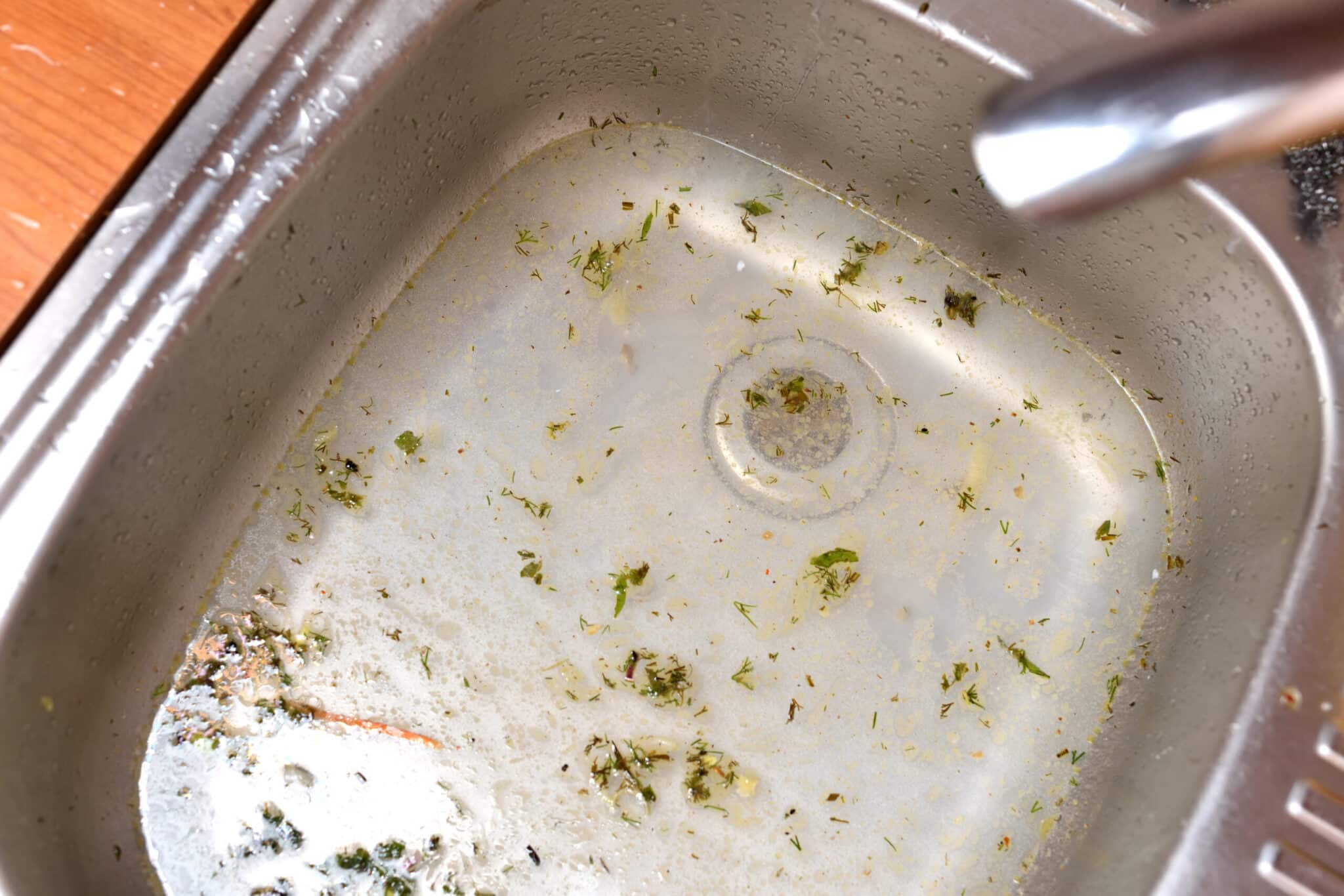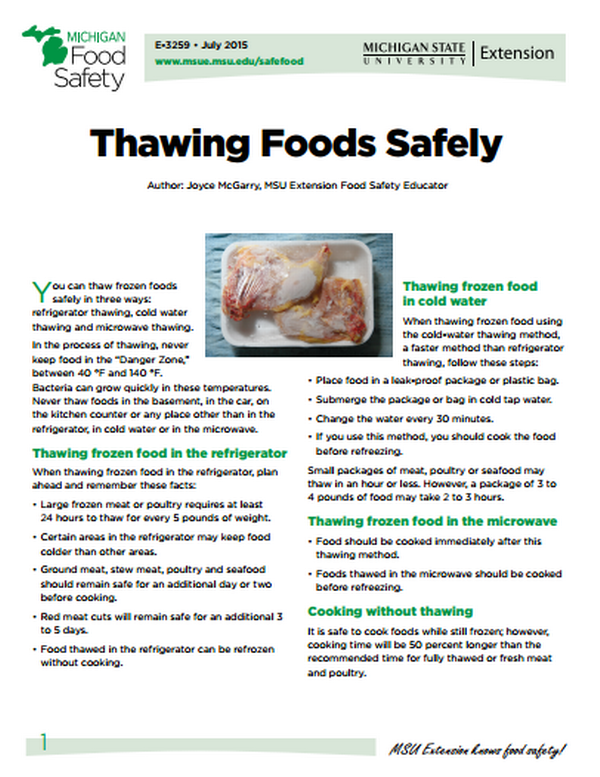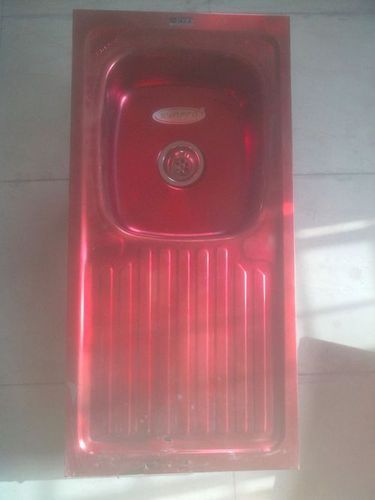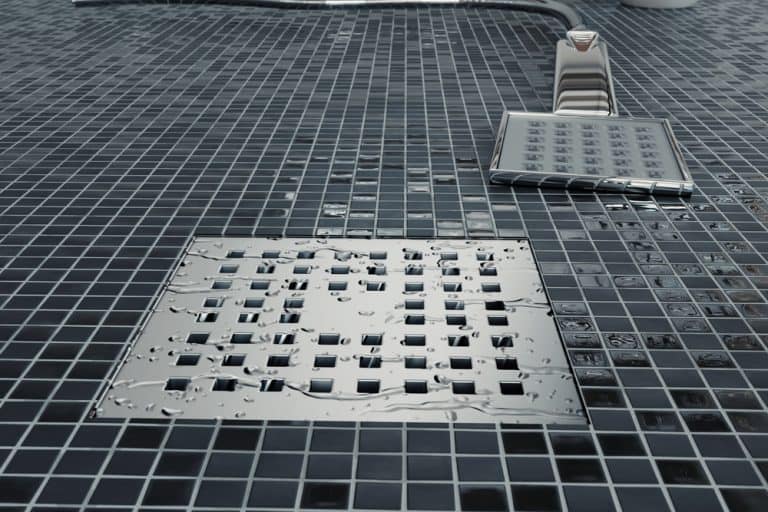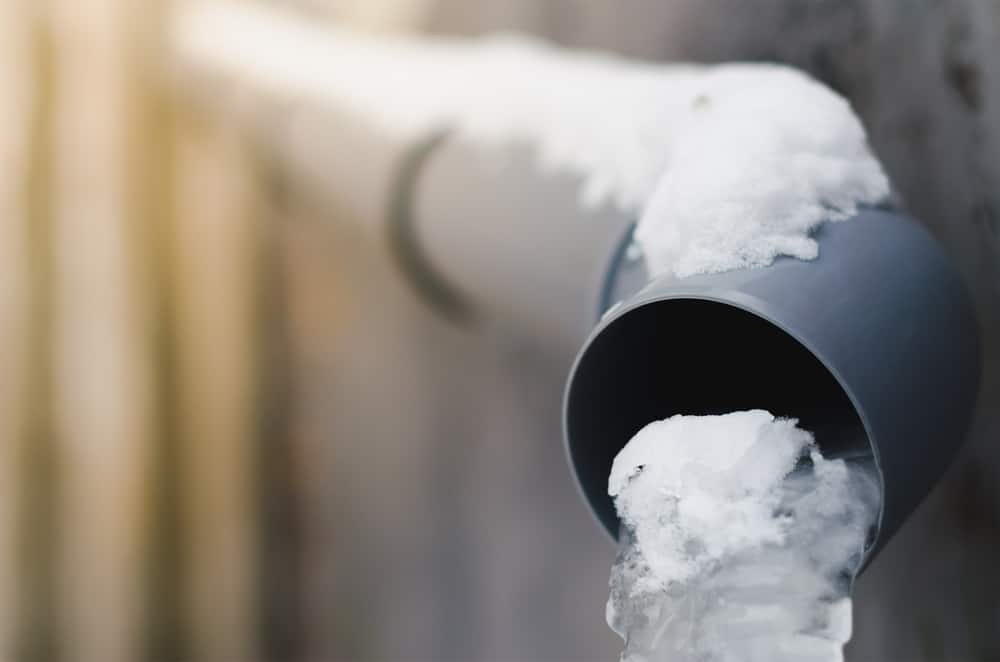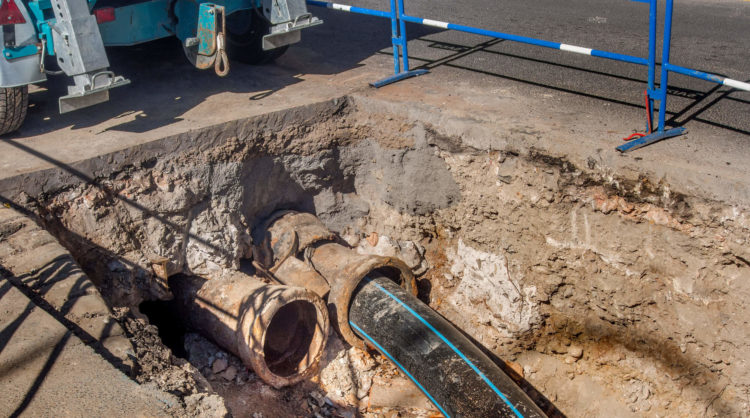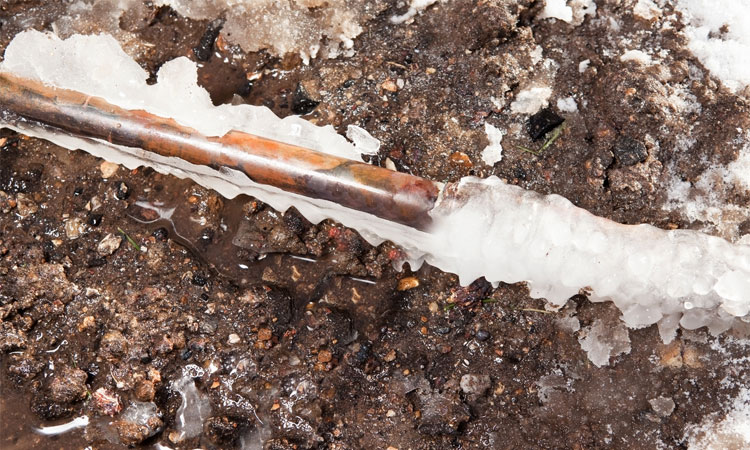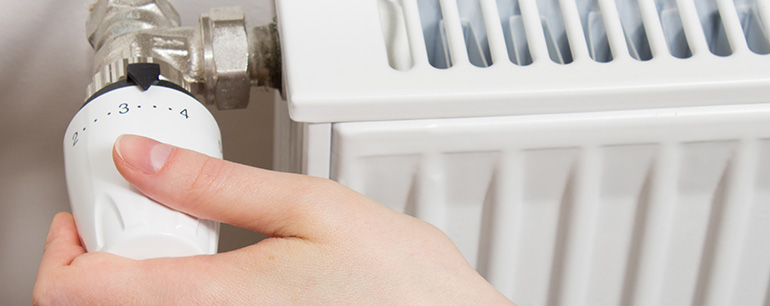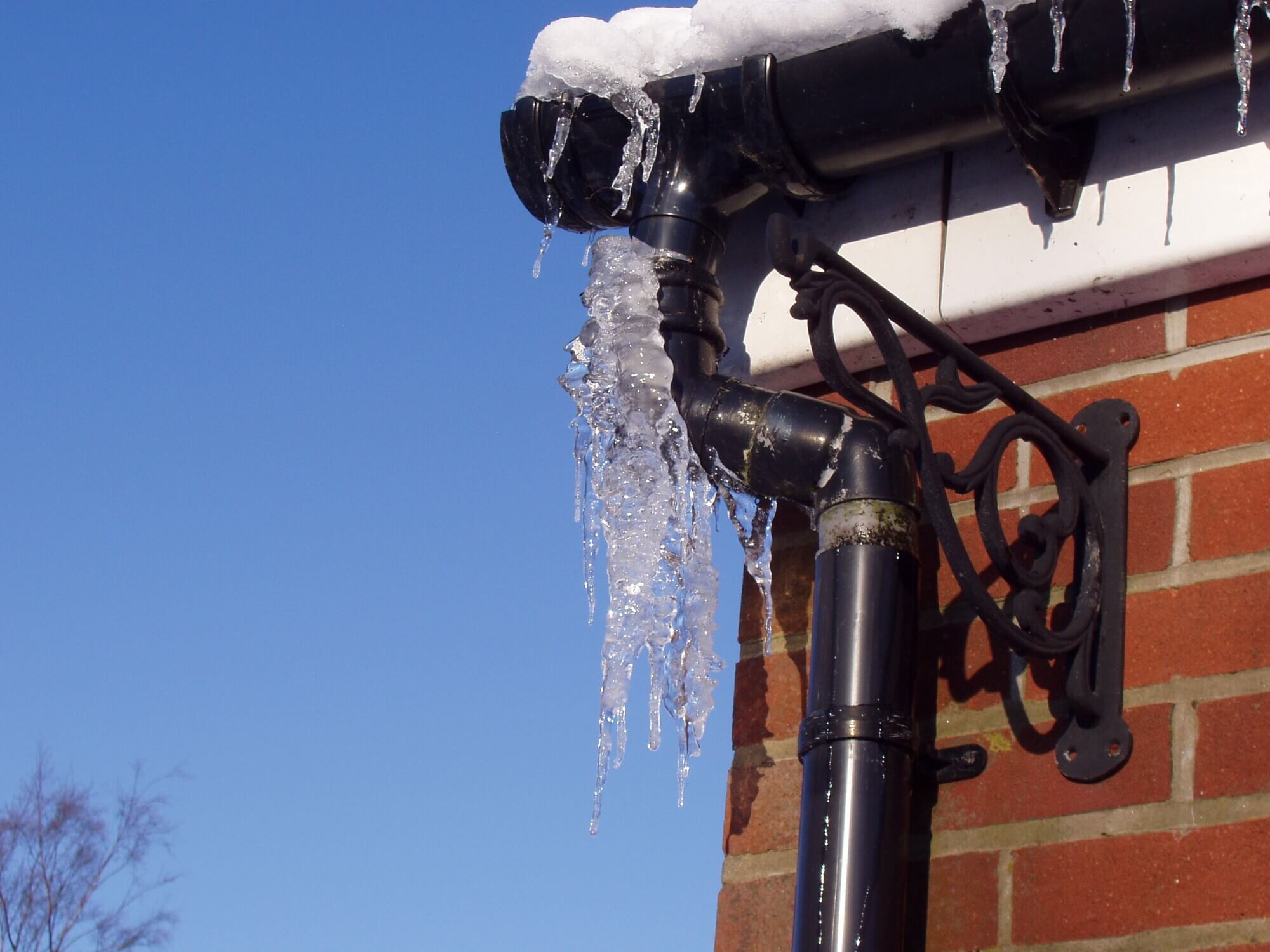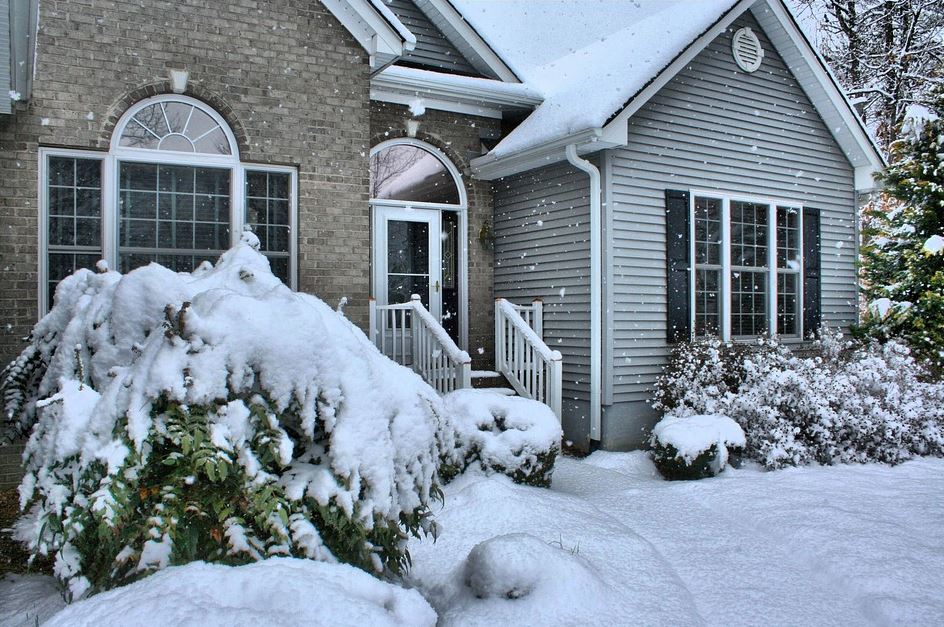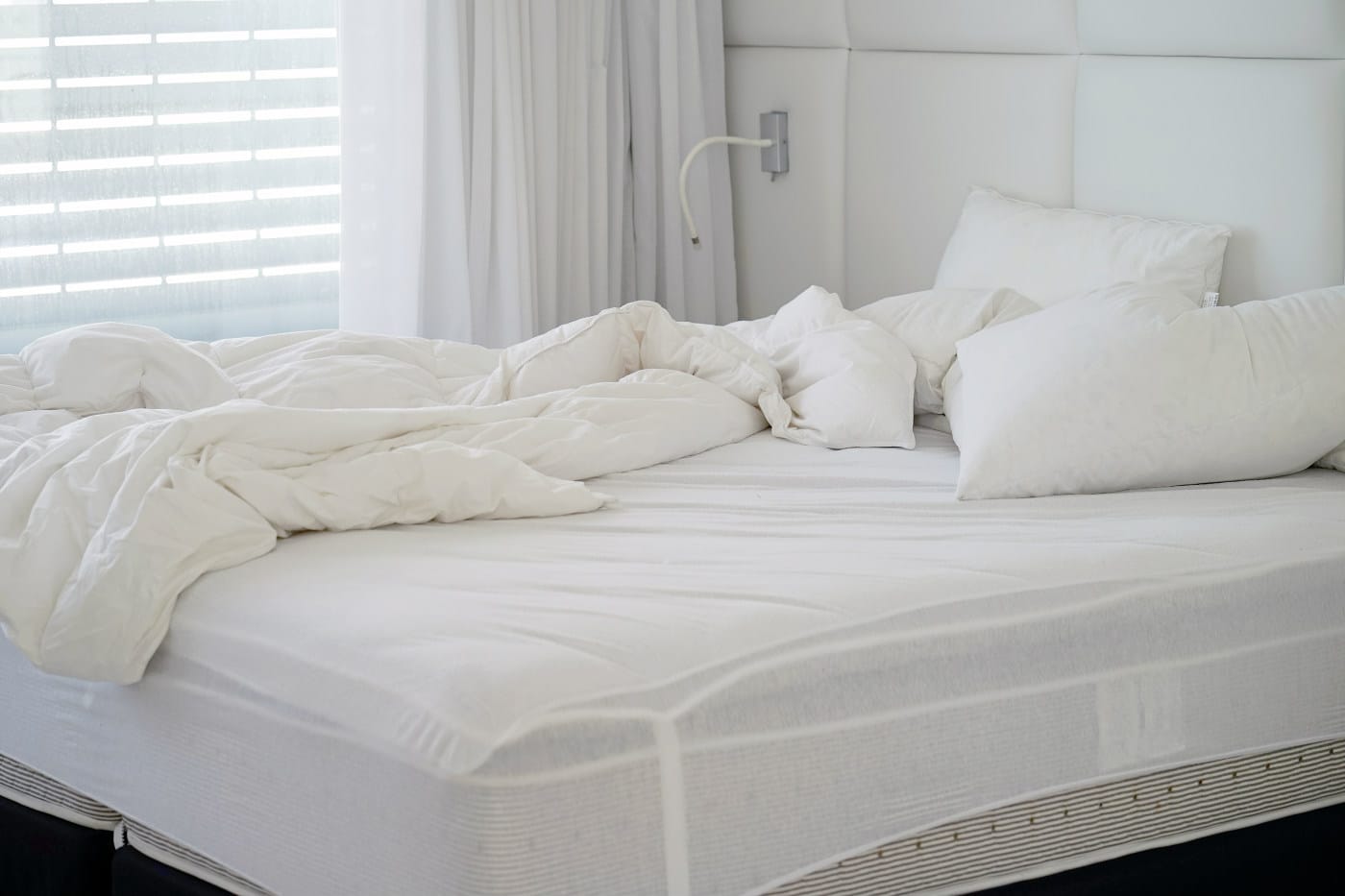Winter can bring a lot of joys and activities, from building snowmen to drinking hot cocoa by the fire. But it can also bring some plumbing woes, especially when it comes to your kitchen sink. With the cold weather, pipes can freeze and water can become sluggish, leading to a clogged sink. But fear not, here are some tips on how to unclog your kitchen sink in winter. 1. Use Hot Water If your kitchen sink is draining slowly, try pouring hot water down the drain. The hot water can help melt any grease or food particles that may be causing the clog. You can also add some dish soap to the hot water for an extra cleaning boost. 2. Plunge It If hot water doesn't do the trick, try using a plunger to dislodge the clog. Make sure to cover the overflow opening with a wet cloth before plunging to create better suction. Plunge vigorously for a few minutes, and then check to see if the water is draining properly. 3. Use a Drain Snake If the plunger doesn't work, it's time to bring out the big guns. A drain snake is a long flexible tool that can reach deep into your pipes to break up and remove any clogs. Insert the snake into the drain and turn the handle to break up the clog. Once you feel the resistance of the clog break, pull out the snake and dispose of any debris. 4. Baking Soda and Vinegar This natural solution can help unclog your kitchen sink without the use of harsh chemicals. First, pour half a cup of baking soda down the drain, followed by half a cup of white vinegar. Let the mixture sit for a few minutes, then pour hot water down the drain. The chemical reaction between the baking soda and vinegar can help break up the clog. 5. Call a Professional If all else fails, it's time to call in the professionals. A skilled plumber can use more advanced methods, such as hydro jetting, to clear out stubborn clogs. They can also inspect your pipes for any damage and provide maintenance tips to prevent future clogs.How to Unclog a Kitchen Sink in Winter
Prevention is always better than a cure, and that rings true for clogged kitchen sinks as well. Here are some tips to prevent your sink from clogging in the first place during the winter months. 1. Avoid Pouring Grease Down the Drain During the colder months, grease and oils can solidify in your pipes, leading to clogs. Instead of pouring bacon grease or cooking oil down the drain, dispose of it in a container and throw it in the trash. 2. Run Hot Water After Using the Disposal If you have a garbage disposal, make sure to run hot water for at least 15 seconds after using it. This helps flush out any food particles that may be clinging to the pipes. 3. Use Strainers Install a strainer in your kitchen sink to catch any food particles or debris before they go down the drain. Regularly empty the strainer to prevent buildup and potential clogs. 4. Insulate Your Pipes To prevent pipes from freezing and potentially causing a clog, make sure to insulate them properly. You can use foam pipe insulation or even wrap them in old towels or blankets to keep them warm. 5. Dispose of Food Scraps Properly During the winter, it's important to be mindful of what you put down your kitchen sink. Avoid disposing of large food scraps, such as leftover turkey bones, down the drain. Instead, throw them in the trash or compost them.Winter Plumbing Tips: How to Prevent a Clogged Kitchen Sink
One of the most frustrating winter plumbing problems is a frozen kitchen sink drain. When the temperature drops, the water in your pipes can freeze, causing a blockage. Here's how to deal with a frozen kitchen sink drain. 1. Thaw the Pipes The first step is to try and thaw the frozen pipes. You can use a hairdryer, hot water, or a portable heater to warm up the pipes. Be careful not to use boiling water as it can cause the pipes to burst. 2. Use Salt Water If the hot water doesn't work, try using salt water. Mix a cup of salt with a gallon of hot water and pour it down the drain. The salt can help melt the ice and unclog the drain. 3. Call a Plumber If you're unable to thaw the pipes or the clog is too stubborn, it's best to call a professional plumber. They have the tools and expertise to safely thaw the pipes and clear any blockages.Dealing with a Frozen Kitchen Sink Drain in Winter
Winter can be harsh on your plumbing, and a clogged kitchen sink is a common problem during this season. But with the right tools and techniques, you can easily fix a clogged kitchen sink yourself. 1. Use a Plunger A plunger is a handy tool that can help clear minor clogs in your kitchen sink. Make sure to cover the overflow opening with a wet cloth before plunging to create better suction. Plunge vigorously for a few minutes, and then check to see if the water is draining properly. 2. Try a Drain Snake If the plunger doesn't do the trick, a drain snake can help break up and remove stubborn clogs. Insert the snake into the drain and turn the handle to break up the clog. Once you feel the resistance of the clog break, pull out the snake and dispose of any debris. 3. Use Baking Soda and Vinegar This natural solution can also help clear a clogged kitchen sink. Pour half a cup of baking soda down the drain, followed by half a cup of white vinegar. Let the mixture sit for a few minutes, then pour hot water down the drain to flush out any remaining debris. 4. Call a Professional If all else fails, it's best to call a professional plumber to fix the clog. They have the proper tools and expertise to safely and effectively clear the clog and inspect your pipes for any damage.Winter Plumbing Woes: How to Fix a Clogged Kitchen Sink
Avoiding a clogged kitchen sink during the winter months is all about taking preventative measures. Here are some tips to help keep your kitchen sink from clogging in cold weather. 1. Dispose of Grease Properly Grease and oils can solidify in your pipes during the colder months, leading to clogs. Instead of pouring grease down the drain, dispose of it in a container and throw it in the trash. 2. Run Hot Water After Using the Disposal If you have a garbage disposal, make sure to run hot water for at least 15 seconds after using it. This helps flush out any food particles that may be clinging to the pipes. 3. Use Strainers Install a strainer in your kitchen sink to catch any food particles or debris before they go down the drain. Regularly empty the strainer to prevent buildup and potential clogs. 4. Insulate Your Pipes To prevent pipes from freezing and potentially causing a clog, make sure to insulate them properly. You can use foam pipe insulation or even wrap them in old towels or blankets to keep them warm. 5. Dispose of Food Scraps Properly During the winter, it's important to be mindful of what you put down your kitchen sink. Avoid disposing of large food scraps, such as leftover turkey bones, down the drain. Instead, throw them in the trash or compost them.Preventing a Clogged Kitchen Sink in Cold Weather
Maintaining your plumbing during the winter months can help prevent clogs and other plumbing issues. Here are some tips to keep your kitchen sink from clogging during the winter. 1. Keep the Pipes Warm Insulate your pipes to prevent them from freezing. You can also keep the cabinets under your sink open to allow warm air to circulate around the pipes. 2. Run Hot Water Run hot water through your kitchen sink regularly to help melt any grease or food particles that may be clinging to the pipes. 3. Use a Garbage Disposal Properly Make sure to only use your garbage disposal for soft food scraps, and never pour grease or oil down it. Also, run hot water for at least 15 seconds after using the disposal to flush out any remaining debris. 4. Schedule Regular Plumbing Maintenance Having a professional plumber inspect your plumbing regularly can help catch any potential issues, such as clogs, before they become major problems.Winter Plumbing Maintenance: Keeping Your Kitchen Sink from Clogging
Understanding the common causes of clogged kitchen sinks in winter can help you prevent them in the first place. Here are some reasons why your kitchen sink may clog during the colder months. 1. Grease and Oils Grease and oils can solidify in your pipes during the winter, leading to clogs. Avoid pouring them down the drain and dispose of them properly. 2. Food Scraps Be mindful of what you put down your kitchen sink during the winter. Large food scraps, such as leftover turkey bones, can easily clog your drain. 3. Frozen Pipes When the temperature drops, the water in your pipes can freeze, causing a blockage. Proper insulation and keeping your pipes warm can help prevent this. 4. Lack of Maintenance Neglecting regular plumbing maintenance can lead to clogs and other plumbing issues. Schedule regular inspections with a professional plumber to keep your kitchen sink running smoothly.What Causes a Kitchen Sink to Clog in Winter?
If you're dealing with a frozen kitchen sink drain, here are some steps to help thaw it and get your sink draining again. 1. Use Hot Water The easiest and safest way to thaw a frozen kitchen sink drain is by pouring hot water down the drain. Use a pot or kettle to heat the water, and then pour it down the drain in a slow, steady stream. 2. Use Salt Water If hot water doesn't work, try using salt water instead. Mix a cup of salt with a gallon of hot water and pour it down the drain. The salt can help melt the ice and unclog the drain. 3. Heat the Pipes If the drain is still frozen, you can try using a hairdryer, portable heater, or even a heated towel to warm up the pipes. Be careful not to use boiling water as it can cause the pipes to burst. 4. Call a Plumber If you're unable to thaw the pipes or the clog is too stubborn, it's best to call a professional plumber. They have the tools and expertise to safely thaw the pipes and clear any blockages.How to Thaw a Frozen Kitchen Sink Drain in Winter
Dealing with a clogged kitchen sink in the winter can be a major hassle. Here are some tips on how to clear a clogged kitchen sink and get your plumbing back to normal. 1. Use Hot Water If your kitchen sink is draining slowly, try pouring hot water down the drain. The hot water can help melt any grease or food particles that may be causing the clog. 2. Plunge It If hot water doesn't do the trick, use a plunger to dislodge the clog. Make sure to cover the overflow opening with a wet cloth before plunging to create better suction. Plunge vigorously for a few minutes, and then check to see if the water is draining properly. 3. Use a Drain Snake If the plunger doesn't work, a drain snake can help break up and remove stubborn clogs. Insert the snake into the drain and turn the handle to break up the clog. Once you feel the resistance of the clog break, pull out the snake and dispose of any debris. 4. Try Baking Soda and VinegarWinter Plumbing Problems: How to Clear a Clogged Kitchen Sink
Tips for Preventing a Clogged Kitchen Sink in Winter

Insulate Your Pipes
 One of the main causes of a clogged kitchen sink in winter is frozen pipes. As the temperatures drop, the water inside your pipes can freeze, causing them to expand and potentially crack or burst. This can lead to a blockage in your pipes, which can cause your sink to clog. To prevent this from happening, it is important to properly insulate your pipes. This can be done by wrapping them in insulating tape or foam sleeves. Not only will this help prevent clogs, but it will also save you from potential pipe damage and expensive repairs.
One of the main causes of a clogged kitchen sink in winter is frozen pipes. As the temperatures drop, the water inside your pipes can freeze, causing them to expand and potentially crack or burst. This can lead to a blockage in your pipes, which can cause your sink to clog. To prevent this from happening, it is important to properly insulate your pipes. This can be done by wrapping them in insulating tape or foam sleeves. Not only will this help prevent clogs, but it will also save you from potential pipe damage and expensive repairs.
Keep Grease and Oil Out of Your Sink
 Another common cause of a clogged kitchen sink in winter is the buildup of grease and oil. During the colder months, these substances can solidify and stick to the inside of your pipes, causing a blockage. To prevent this, avoid pouring grease or oil down your sink. Instead, dispose of them in a separate container and throw them away in the trash. You can also use a strainer in your sink to catch any small particles of food that may contribute to clogs.
Another common cause of a clogged kitchen sink in winter is the buildup of grease and oil. During the colder months, these substances can solidify and stick to the inside of your pipes, causing a blockage. To prevent this, avoid pouring grease or oil down your sink. Instead, dispose of them in a separate container and throw them away in the trash. You can also use a strainer in your sink to catch any small particles of food that may contribute to clogs.
Run Hot Water Frequently
 During the winter, it is important to run hot water in your sink more frequently. Not only does this help prevent frozen pipes, but it can also help melt any buildup of grease or oil in your pipes. Make it a habit to run hot water for a few minutes after doing dishes or using your sink. This will help keep your pipes clear and prevent any potential clogs.
During the winter, it is important to run hot water in your sink more frequently. Not only does this help prevent frozen pipes, but it can also help melt any buildup of grease or oil in your pipes. Make it a habit to run hot water for a few minutes after doing dishes or using your sink. This will help keep your pipes clear and prevent any potential clogs.
Use a Plunger or Drain Snake
 If you do end up with a clogged kitchen sink during the winter, don't panic. There are a few simple tools you can use to help clear the clog. A plunger can be effective in dislodging any small blockages, while a drain snake can help break up and remove larger clogs. Make sure to use these tools carefully and according to their instructions to avoid further damage to your pipes.
If you do end up with a clogged kitchen sink during the winter, don't panic. There are a few simple tools you can use to help clear the clog. A plunger can be effective in dislodging any small blockages, while a drain snake can help break up and remove larger clogs. Make sure to use these tools carefully and according to their instructions to avoid further damage to your pipes.
Call a Professional
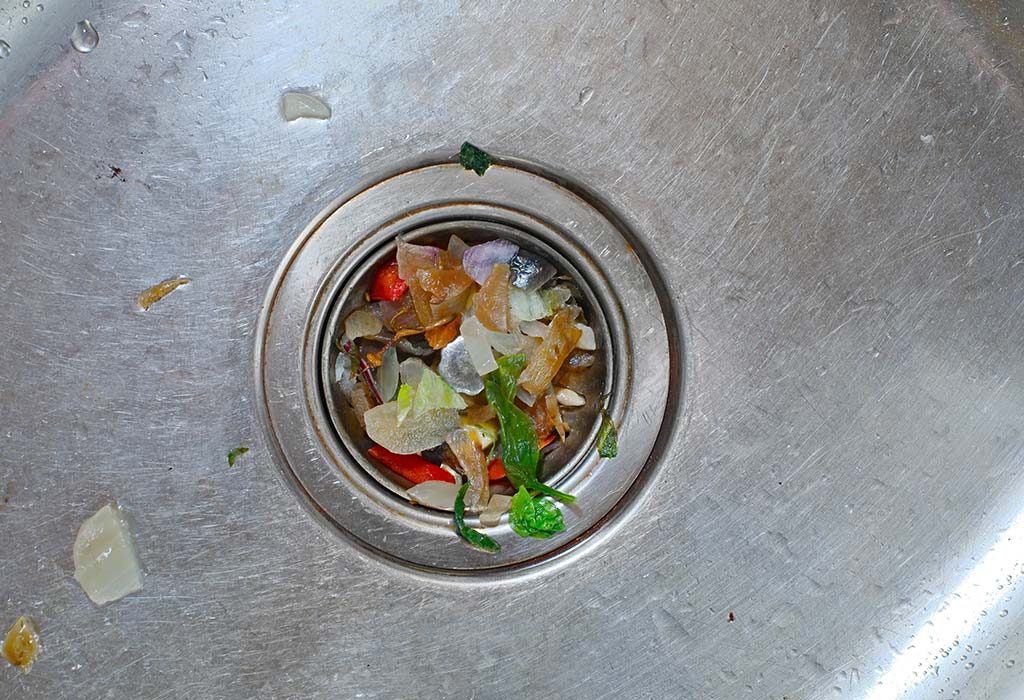 If all else fails and you still can't unclog your kitchen sink, it may be time to call in a professional. They have the tools and expertise to effectively clear any stubborn clogs and ensure that your pipes are in good condition. It is always better to seek professional help rather than attempting to fix the issue yourself and potentially causing further damage.
Overall, preventing a clogged kitchen sink in winter is all about being proactive. Taking a few simple steps to properly care for your pipes and being mindful of what goes down your sink can save you from the hassle and expense of dealing with a clogged sink during the colder months. So follow these tips and enjoy a clear and functional kitchen sink all winter long.
If all else fails and you still can't unclog your kitchen sink, it may be time to call in a professional. They have the tools and expertise to effectively clear any stubborn clogs and ensure that your pipes are in good condition. It is always better to seek professional help rather than attempting to fix the issue yourself and potentially causing further damage.
Overall, preventing a clogged kitchen sink in winter is all about being proactive. Taking a few simple steps to properly care for your pipes and being mindful of what goes down your sink can save you from the hassle and expense of dealing with a clogged sink during the colder months. So follow these tips and enjoy a clear and functional kitchen sink all winter long.






